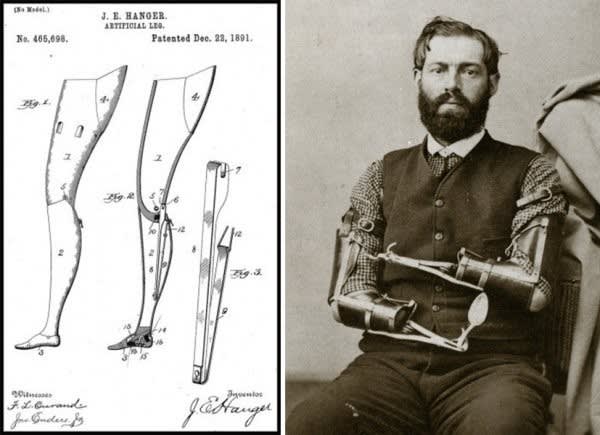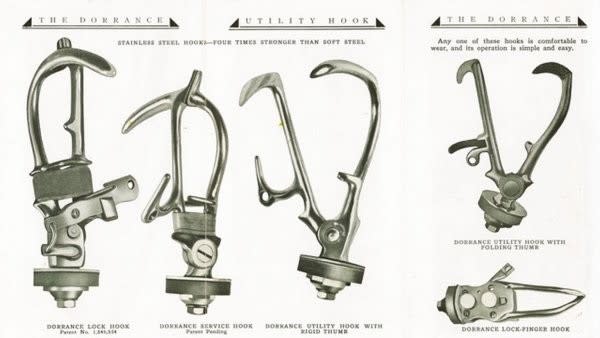Functional Reality, the Rebirth of the Prosthesis
Follow articleHow do you feel about this article? Help us to provide better content for you.
Thank you! Your feedback has been received.
There was a problem submitting your feedback, please try again later.
What do you think of this article?
Humans, as we all know are mammals and as such we are privy to having four limbs, this trait is the same for all mammalians and most reptilians for that matter, but that’s another evolutionary story. The world we have created for ourselves caters primarily for the able-bodied, but, accidents, mishaps of nature, war, and other occurrences can sometimes step-in and we can find ourselves minus a limb. Not having the ability to regrow body parts naturally, like Starfish who can regrow limbs or Lizards who can regrow a tail, humans have limited options. Losing an arm means we can still walk, losing a leg the opposite and losing a little toe may not prove to be life-changing. Depending on the severity or location of our loss it more or less dictates what our options will be motility wise and perhaps with our career choices and so on.
The Early Prosthesis
Being the creative species that we are, humanity began dealing with such disabilities many centuries ago, long before recorded history began, if they survived such a debilitating event that is, or were perhaps born with a disability. Finding evidence for this is slim, so, the best we can do is look back in time to see just what history has left us. Currently, two of the oldest known artificial limbs happen to be the smallest, both are big toes that were found attached to the mummified remains of ancient Egyptians. One is said to be dated around 600BC and is known as the Cartonnage Toe (cartonnage is a papier mâchè mixture of linen, glue and plaster) and the other is a carved wood and leather big toe affair, created between 950 and 710BC, shown below:
Image source: Smithsonian.com
An artificial leg said to date to around 300BC was found in Capua, Italy, in 1858, made of iron and bronze with a wooden core, a copy can be found in the Science Museum, London, as the original was sadly destroyed in WWII during an air raid. A Roman scholar, Pliny the Elder (23-79AD) wrote of a Roman General who had to have his right hand amputated and when he recovered had an iron hand created which could hold his shield so he could fight again. We are all familiar with the images of pirates with hooks for hands and wooden peg legs, which, in the western world at least, was about the pinnacle of progress in the design of artificial limbs until around 1500AD.
1500AD And Up
A French Doctor named Ambroise Pare developed an effective method of amputation that ensured patients had a better chance of survival, which in turn inspired him to create replacement limbs. Pare designed various foot and leg prostheses and a leg design incorporating a knee-lock control which can still be found in today’s devices. One of Pare’s friends, a locksmith called Lorrain, helped further develop light-weight limbs when he used leather, paper and glue in their design. Around the same time period, a German mercenary called Götz Von Berlichingen lost the lower portion of his right arm during battle and had two mechanical arms created with different features. These arms were capable of holding items such as reins or a shield, a sword or even a quill, operated by his free hand he could manipulate release mechanisms and springs to alter the position of the hand and fingers, a very clever and impressive design for the time period.

Knees and Catgut
As near the end of the Renaissance period, Pieter Verduyn designed and developed the first non-locking below-the-knee prosthesis in 1696, the concept of which would later serve to become the basis for current joint designs. Fast forward to 1800 and a Londoner called James Potts, developed a wooden leg with a steel knee joint and an articulated foot that was controlled by catgut tendons attached from the knee to the ankle. This particular design became known as ‘Anglesey Leg’ after the Marquess of Anglesey (Henry Paget, 2nd Earl of Uxbridge) who was privy to wearing such a device after the battle of Waterloo cost him a leg. The American Civil War saw another boost in the mechanisms and designs of replacement limbs due to the very high level of injuries seen during that conflict. By 1868 the first suggestion of using aluminium in the construction of prostheses was suggested by Gustav Hermann, but it wasn’t until 1912 when Andrea Marcel Desoutter, an English aviator, lost his leg in an aircraft crash and was inspired to create the first aluminium prosthesis, assisted by his engineer brother, Charles. The brothers later formed the company called Desoutter Brothers Ltd. which manufactured artificial limbs and tools.
An American called D.W. Dorrance who was an amputee himself (and the founder of Hosmer), patented the split-hook hand not long after WWI, it could grip and manipulate objects easily and the derivatives of its design are still in use today. During 1946 a suction sock for lower-limb amputees was developed by researchers at UC Berkley which is very similar in design to those found in modern artificial limbs. In the 1970’s Ysidro Martinez created a prosthesis that instead of trying to replicate the motion of a limb concentrated on improving the user’s gait and reducing painful friction. This particular idea, which made walking more comfortable for the wearer has had a continuing impact in prosthesis design.
A Modern Movement
Moving into the modern era, things are developing more rapidly than ever before, with huge strides being made in the use of modern materials like carbon fibre, the inclusion of biometrics and robotics and of course the growing use of 3D printing. Companies such as Johns Hopkins are a leading example of a company who is making extraordinary strides in the development of ‘smart limbs’. Hands that have the sense of touch, arms that can be controlled by nerves in the patient’s chest, and limbs that can be controlled by thought alone, truly amazing and groundbreaking work.
What about the Children?
Technology is flourishing, growing at an exponential rate, but for small children, options such as those shown in the above video are at this stage, impractical. The same principle applies to everyday artificial limbs as well, as children don’t stay little for long, the costs of regular replacement are currently are out of scope. With that concept firmly in mind, Ben Ryan embraced technological advances to develop a 3D printed arm for his young son, Sol, who at the tender age of 10 days, had to have his left arm amputated. He had discovered that children who didn’t have a prosthesis from an early age had a greater chance of rejecting them when the time came for one to be fitted. With little support with regard to obtaining an artificial limb until Sol was older, Ben, along with some material help from RS Components, designed and created a 3D printed arm for his son. Utilising a Microsoft Xbox 360 Kinect as a scanner, Ben was able to create a digital version of his son’s arm where the prosthesis would fit. The design also incorporated a small bladder that can be manually activated to allow the thumb to move and thus grip an object. This concept was duly replicated within a 3D printed prosthesis, refined and perfected and Sol once again had a left arm he could interact with his surroundings with. An arm that could be rapidly updated as he grew, and gave him the increased prospect of not rejecting an artificial limb in later life.
Seeing a global need in the realms of prostheses for young children Ben created the company Ambionics whereby customers can send Ben a scan of their child’s requirements, and he will rapidly create a prototype for them to try. In many countries there is very little provision for artificial limbs for small children, sometimes none, until they are at least teenagers and the cost implications are often a factor. Hopefully, Ambionics can fill that gap and help many more children overcome their disability sooner and give them all the best chance of trying to lead a normal life in a world that’s built for the able-bodied.
Touching the future
Will the likes of the research and development work being carried out by Johns Hopkins and others be blended with the rapid, custom-made approach of Ambionics? If the medical intervention involved with Reinnervation and Bioelectronics progresses as rapidly as the technology it’s a distinct possibility, or perhaps new methods of interacting with a robotic limb will arise? Will people be tempted to replace their existing limbs with mechanical counterparts that could be far more powerful? The future, it seems, is being crafted in the multimillion-dollar specialist labs and institutions found around the globe and within the homes of concerned parents. Whatever the outcome, it appears that technology is moving at an accelerated pace and in the right direction for the benefit of all mankind and that now appears to include its children.
Read More about Ambionics




